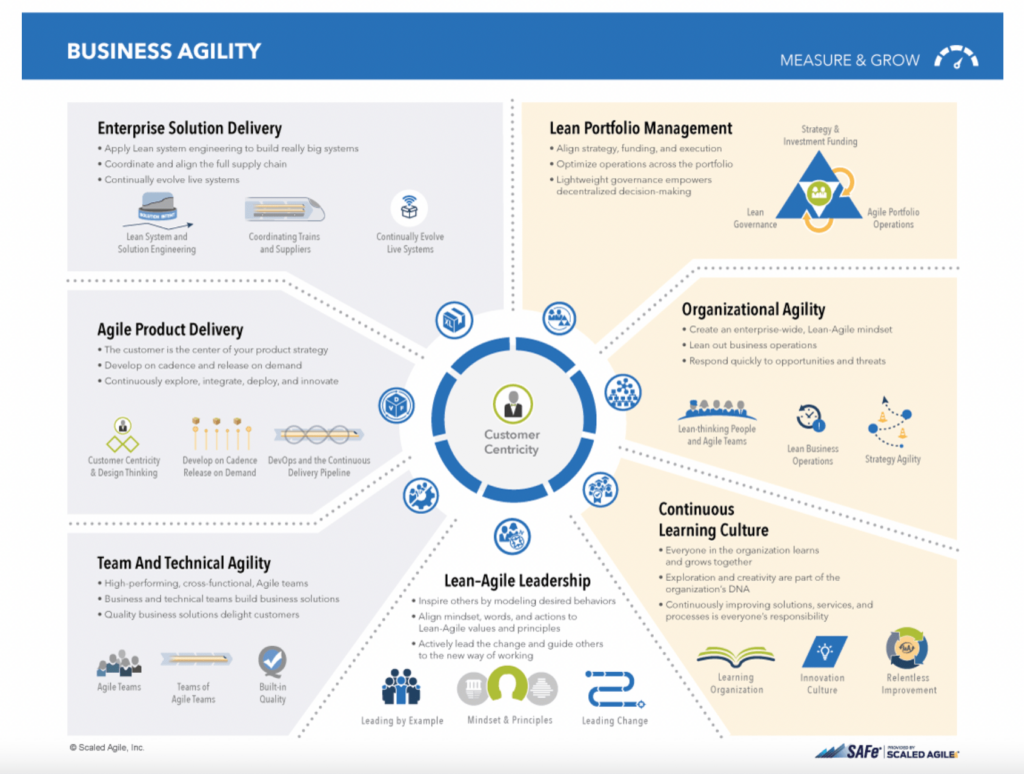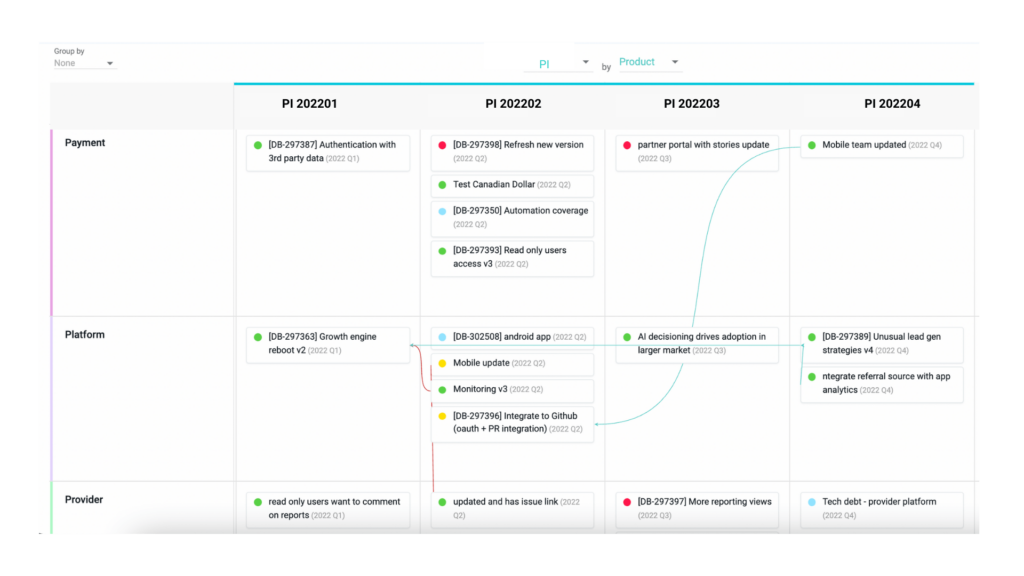The Scaled Agile Framework (SAFe) is a way for enterprise companies to implement agile delivery at scale. SAFe promotes alignment, collaboration, and delivery across large numbers of agile teams and includes structured guidance on roles and responsibilities, and how to plan work. SAFe for Lean Enterprise “integrates the power of Lean, Agile, and DevOps into a comprehensive operating system” that helps organizations achieve business agility.
Companies that practice SAFe typically lead a portfolio, or portfolio of portfolios, and need a responsive Product Portfolio Management platform for SAFe lean enterprise to manage the integrated workflows.
Dragonboat is the Responsive PPM Platform for SAFe Lean Enterprise
Here’s how Dragonboat’s Responsive PPM (RPPM) platform supports and enables the key elements of the SAFe Lean Enterprise framework:
- Continuous learning – Dragonboat’s Idea module allows you to continuously collect, organize, and prioritize feedback, insights and requests from various stakeholders including customers and internal teams and provide input to formulate product and portfolio backlog and planning.
- Outcome based product portfolio management (PPM) – Rather than focusing on delivering features, product organizations can plan and prioritize product portfolio roadmaps in Dragonboat which enables teams to focus on business outcomes, customer outcomes, and portfolio outcomes.
- Organizational agility – Dragonboat enables organizational agility via top down alignment of goals and strategies with our dynamic portfolio hierarchy, bottoms up ideation, prioritization and innovation, and cross team collaboration.

SAFe Program Increments (PI) Planning with a Responsive PPM Platform
PI planning (or big room planning), synonymous with sprint planning in the scrum practice, is one of the most recognized elements of SAFe. In PI Planning, various product teams gather to map value streams, identify dependencies, and synchronize PIs.
Dragonboat’s 3D Roadmapping can be used for value stream and big room planning. Teams can prioritize within their own stream, align on goals, and visualize dependencies to plan cross-functionally.

Agile Product Delivery via Jira, Azure DevOps or Other Agile tools
After PI planning, teams can push plans to engineering tools for agile product delivery.
Dragonboat’s PPM Platform is seamlessly integrated with agile tools including Jira, Azure Dev Ops, and Shortcut to connect strategy with execution, while automatically rolling up progress, and using smart forecasting to provide visibility while eliminating manual tracking.
Measure and learn by connecting outcomes to goals and adjusting allocation and prioritization to best achieve portfolio outcomes.
Connecting Strategy with Agile Execution
Dragonboat is a complete product portfolio solution that enables top down, bottoms up and cross team collaboration, along with iterative resource planning. The workflow starts with aligning and allocating strategic goals/ OKRs/ themes, with idea capture and prioritization, then enabling collaborative planning between product and engineering teams, as well as across product teams to best design a portfolio roadmap. Then, integrating with agile tools for team execution.
The PPM tool stack of Dragonboat + Jira/ ADO/ Shortcut, is perfect for portfolio planning and alignment connected to Agile execution. This forms a complete double-diamond workflow connecting strategy with execution.
Continuously Learn >> Build >> Measure
Product teams use Dragonboat’s Idea module to collect and organize feedback, requests, and insights from customers and cross-functional teams. These ideas are a key part of product discovery for teams to learn about customers and build the right products.
Product teams also use Dragonboat to align product goals with strategies and measure actual outcomes to influence future portfolio iteration and allocation.
Dragonboat’s Responsive PPM Supports a Variety of Product Management and Delivery Frameworks
In addition to SAFe, Dragonboat supports a variety of Agile practices, including fuzzy planning (e.g. this month, this quarter, next quarter), lean roadmapping (Now, Next, Later), duo-track agile (discovery + delivery), strategic planning on-demand, and quarterly planning. Product and program managers can easily pick up and integrate Dragonboat into their current product management and delivery processes.
When it comes to implementation, Dragonboat enables agile rollout (aka MVPC – minimum viable process change). It takes only a few minutes to get started and requires no changes to existing team practices.
Teams may continue to work within their existing workflows which might include standard scrum and sprints, scrumban, kanban, classic + next gen Jira, or even traditional/ waterfall.
Dragonboat supports the portfolio of portfolios – which means each organization may start with one instance or multiple and easily scale their Responsive Product Portfolio Practice across more teams as needed.




